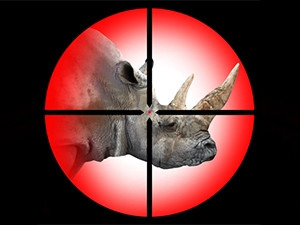
The Internet of things (IOT) is being used to study animal behaviour, which will hopefully lead to better conservation efforts in and around SA.
IBM, in collaboration with MTN and the Wageningen University (WU) in the Netherlands, have been testing an IOT platform, called the MTN Connected Wildlife Solution, for the past 23 months at Welgevonden Game Reserve, in Limpopo.
The wildlife protection solution was created to combat rhino poaching, by predicting and preventing threats to endangered species.
"IOT uses identifiers - which can be linked to any object - to seamlessly transfer data over a network. In the current project, the identifiers are unique sensor collars placed on four different species of prey animals that roam the Welgevonden Game Reserve with the rhinos," says MTN in a statement.
"For a 38 000-hectare rugged and hilly reserve with no cell coverage, this is ground-breaking."
The data collected from the sensors is communicated via a wide area network server and backhauled over the MTN 3G/4G network.
IBM says rhino poaching has reached crisis levels in SA. "In 2016, 1 054 rhinos were killed in the region, representing a loss of approximately 6%, which is close to the birth rate. If this continues, the rhino population will remain dangerously close to extinction," the company says in a statement.
Through IBM's Watson IOT platform and predictive analytics, the Welgevonden Game Reserve was able to monitor and collect information related to animal location, movement, direction and average speed of travel, along with other data - over a wide range.
Initial results show how animal behaviour changes during a full moon, reading clear danger signals in a breeding camp where no predators were known to hunt (it was subsequently determined an escaped leopard was on the prowl), and the very different reactions to a ranger vehicle approaching versus a predator.
"We are only scratching the surface of what predictive analytics, cognitive computing and big data can teach us about animal behaviour. However, when it comes to rhino poaching, the aim is to harness this data to radically bring down the number of kills by using sensors on animals in the park to determine danger levels and set teams in motion to save the animals," says Mariana Kruger, GM for ICT solutions at MTN Business.
We are only scratching the surface of what predictive analytics, cognitive computing and big data can teach us about animal behaviour.
Mariana Kruger
IBM says the solution will reduce the cost of expensive and largely ineffective methods of protecting wildlife currently used by game farms, such as the use of military personnel. "It is organised crime, and the immense amount of manpower and money that has to go in to saving rhinos is not sustainable," says Kruger.
Kruger will be discussing the impact of the IOT on conservation in Africa at the Gartner/ITXpo, in Cape Town, this week.
It is hoped the solution will bring down poaching to just one a year, globally.
The pilot phase of the project is set to provide enough inputs and use cases to drive further roll-out around the country in the next few months.
Share